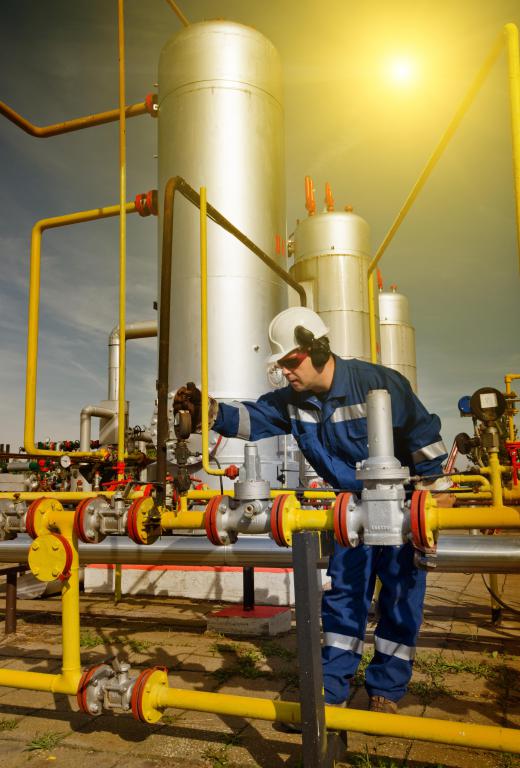Wet gas is any type of gas that is made from a mixture of elements and has a fluid concentration in the range of 10 percent to 15 percent, making the gas somewhat liquid. Unlike dry gas, which is easier to measure, there can be variable densities with wet gas, because there are different concentrations of fluids. While there are many types of wet gases, the most common commercial one is natural gas, because of the hydrocarbons present in it. An advantage of this is it normally is easier to turn this into a regular fluid, which can be useful for some applications.
Gas normally has very little, if any, liquid left after becoming a gas, but certain gases and certain conditions leave a significant amount of liquid. As of 2011, there is no official percentage specified to define fluid levels in wet gas, but such a gas typically has from 10 percent to 15 percent fluid. This leaves the gas with a large amount of moisture that can be easily felt, and this makes the gas act somewhat differently.

A dry gas commonly can be measured easily, because most gases have about the same density, but this is harder with wet gas. There can be a variable amount of moisture, which can radically chance the gas’s density, so measurements typically have to be made specific to that gas, based on its exact physical state. It also may be difficult to estimate how this type of gas will flow as a result of the increased moisture.
One of the most common wet gases is natural gas, which tends to keep changing its physical state during production. When natural gas is mined, it typically is a combination of gas and liquid because of the presence of hydrocarbons, but the ratio of each changes based on the production process and temperature. For example, if the natural gas is going through a high-temperature process, then this decreases the amount of fluid, changing its composition.
A gas sometimes must be changed into a liquid for commercial or scientific purposes, based on the gas and the process. While it is harder to measure wet gas, it does have an advantage in the physical-state arena. It already is part liquid, so it commonly is easier to turn the gas into a full liquid. This can be done by lowering the temperature or manipulating the pressure of the gas until it changes.
